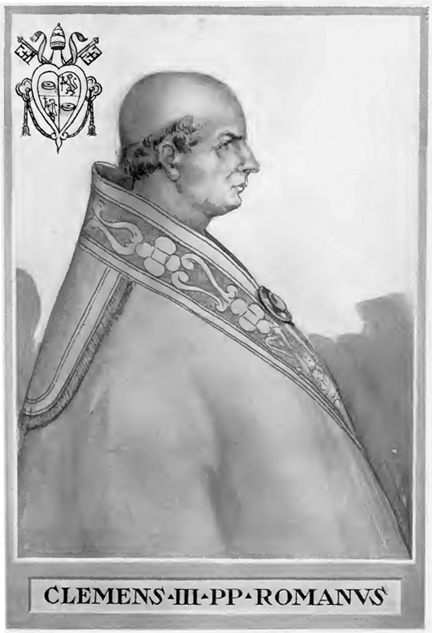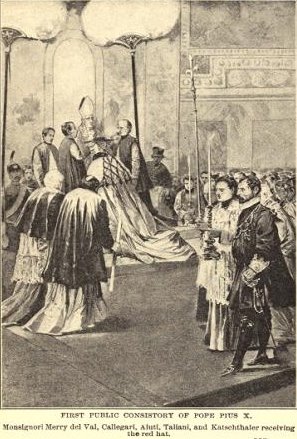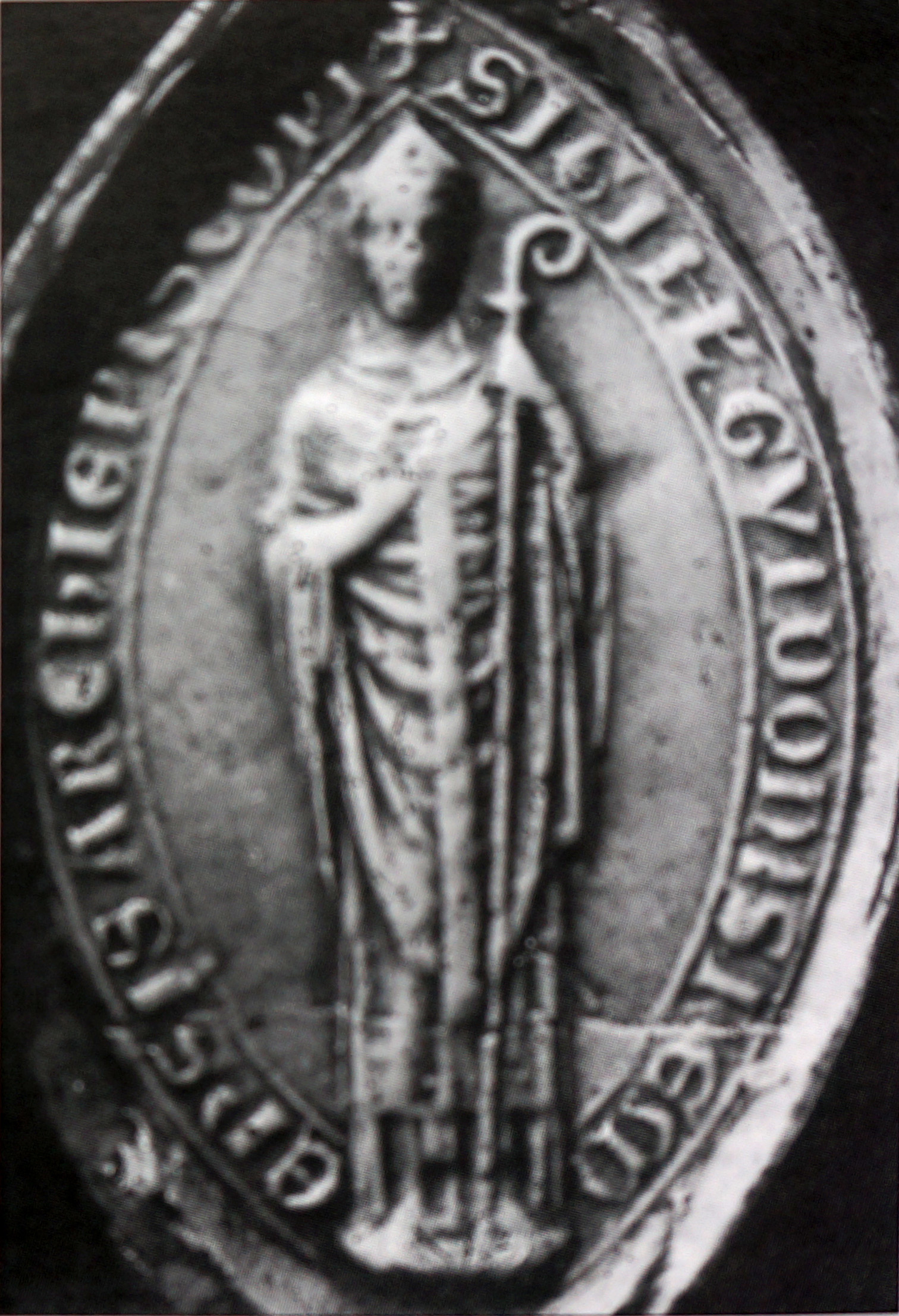|
Cardinals Created By Clement III
Pope Clement III (r. 1187–91) created 30 cardinals in three consistories held during his pontificate; this included the elevation of his future successor Pope Innocent III in 1190. 12 March 1188 * Gérard Mainard O.Cist. * Pietro * Alessio * Giordano di Ceccano O.Cist. * Pietro * Pietro * Giovanni Malabranca * Gregorio de San Apostolo * Giovanni Felici * Bernardo Can. Reg. * Gregorio Crescenzi May 1189 * Giovanni * Alessandro * Giovanni September 1190 * Pietro Gallozia * Rufino * Rinaldo O.S.B. * Guy Paré O.Cist. * Cencio * Ugo * Giovanni di Salerno O.S.B. Cas. * Romano * Egidio di Anagni * Gregorio Carelli * Lotario dei Conti di Segni * Gregorio * Niccolò * Guido de Papa * Giovanni Barrata * Niccolò Notes and references Sources *{{cite web, authorlink=Salvador Miranda (historian) , last=Miranda , first=Salvador , title=Consistories for the creation of Cardinals 12th Century (1099-1198): Clement III (1187-1191), url=https://cardinals.fiu.edu/consistories-xii.htm#Cle ... [...More Info...] [...Related Items...] OR: [Wikipedia] [Google] [Baidu] |
Pope Clement III
Pope Clement III ( la, Clemens III; 1130 – 20 March 1191), was the head of the Catholic Church and ruler of the Papal States from 19 December 1187 to his death in 1191. He ended the conflict between the Papacy and the city of Rome, by allowing the election of magistrates, which reinstalled the Papacy back in the city after a six year exile. Clement, faced with a deplete college of cardinals, created thirty-one cardinals over three years, the most since Hadrian IV. He died 20 March 1191 and was quickly replaced by Celestine III. Family Paolo Scolari was born into an influential family growing in significance in Rome during the twelfth century. Pope Alexander III appointed him archpriest of the patriarchal Liberian Basilica, cardinal-deacon of Sergio e Bacco, and finally cardinal bishop of Palestrina in December 1180. Papacy Election Paolo was elected as the new Pope on December 19, 1187, two days after the death of Gregory VIII. He was the cardinals' second choi ... [...More Info...] [...Related Items...] OR: [Wikipedia] [Google] [Baidu] |
Papal Consistory
In the Roman Catholic Church a consistory is a formal meeting of the College of Cardinals called by the pope. There are two kinds of consistories, extraordinary and ordinary. An "extraordinary" consistory is held to allow the pope to consult with the entire membership of the College of Cardinals. An "ordinary" consistory is ceremonial in nature and attended by cardinals resident in Rome. For example, the pope elevates new cardinals to the College at a consistory; Pope Francis has called consistories for ceremonies of canonization. A meeting of the College of Cardinals to elect a new pope is not a consistory, but a conclave. History The term ''consistory'' comes from the la, con-sistere; "stand together".''Papal Consistory'' by Kevin Knight (Catholic Encyclopedia, 2009) Early popes conferred with their Roman presbytery which include ... [...More Info...] [...Related Items...] OR: [Wikipedia] [Google] [Baidu] |
Pope Innocent III
Pope Innocent III ( la, Innocentius III; 1160 or 1161 – 16 July 1216), born Lotario dei Conti di Segni (anglicized as Lothar of Segni), was the head of the Catholic Church and ruler of the Papal States from 8 January 1198 to his death in 16 July 1216. Pope Innocent was one of the most powerful and influential of the medieval popes. He exerted a wide influence over the Christian states of Europe, claiming supremacy over all of Europe's kings. He was central in supporting the Catholic Church's reforms of ecclesiastical affairs through his decretals and the Fourth Lateran Council. This resulted in a considerable refinement of Western canon law. He is furthermore notable for using interdict and other censures to compel princes to obey his decisions, although these measures were not uniformly successful. Innocent greatly extended the scope of the Crusades, directing crusades against Muslim Iberia and the Holy Land as well as the Albigensian Crusade against the Cathars in sou ... [...More Info...] [...Related Items...] OR: [Wikipedia] [Google] [Baidu] |
Pietro Gallocia
Pietro Gallocia or Galluzzi (c. 1120/30, in Rome – 14 March 1211, in Rome) was a Roman cardinal. He was apostolic subdeacon and governor of Campagna in the pontificate of Pope Alexander III (1159-1181). Pope Clement III created him Cardinal-Deacon in 1188 and named him Cardinal-Bishop of Porto e Santa Rufina in 1190. He participated in the papal election, 1191 and papal election, 1198. Papal legate in Constantinople 1191–92. In 1204 he consecrated King Peter II of Aragon, who was solemnly crowned by the Pope Innocent III. He became Dean of the Sacred College of Cardinals The dean of the College of Cardinals ( la, Decanus Collegii Sanctae Romanae Ecclesiae Cardinalium) presides over the College of Cardinals in the Roman Catholic Church, serving as '' primus inter pares'' (first among equals). The position was estab ... in April 1206. He died at Rome at very advanced age. Notes and references Sources *Werner Maleczek, ''Papst und Kardinalskolleg von 1191 bis 1216'', Wi ... [...More Info...] [...Related Items...] OR: [Wikipedia] [Google] [Baidu] |
Guy Paré
Guy Paré (died 1206) was a French Cistercian, who became general of his order, Archbishop of Reims, and a Cardinal. He was a papal legate to Germany. In 1204 he was made Archbishop by Pope Innocent III; this position also made him a ''pair de France''. In 1205 Innocent conferred on him the privilege of consecrating the Kings of France. He died in Liège of the plague Plague or The Plague may refer to: Agriculture, fauna, and medicine *Plague (disease), a disease caused by ''Yersinia pestis'' * An epidemic of infectious disease (medical or agricultural) * A pandemic caused by such a disease * A swarm of pes ..., while engaged on a papal diplomatic mission. He is buried at Citeaux. Notes External links TO&C {{DEFAULTSORT:Pare, Guy 1206 deaths French Cistercians Cistercian abbots general Archbishops of Reims 13th-century French cardinals Cardinal-bishops of Palestrina External cardinals Year of birth unknown 13th-century peers of France ... [...More Info...] [...Related Items...] OR: [Wikipedia] [Google] [Baidu] |
Florida International University
Florida International University (FIU) is a public research university with its main campus in Miami-Dade County. Founded in 1965, the school opened its doors to students in 1972. FIU has grown to become the third-largest university in Florida and the fifth-largest public university in the United States by enrollment. FIU is a constituent part of the State University System of Florida. In 2021, it was ranked #1 in the Florida Board of Governors performance funding, and had over $246 million in research expenditures. The university is classified among "R1: Doctoral Universities – Very high research activity". FIU has 11 colleges and more than 40 centers, facilities, labs, and institutes that offer more than 200 programs of study. It has an annual budget of over $1.7 billion and an annual economic impact of over $5 billion. The university is accredited by the Southern Association of Colleges and Schools (SACS). FIU's intercollegiate sports teams, the FIU Panthers, compete i ... [...More Info...] [...Related Items...] OR: [Wikipedia] [Google] [Baidu] |
College Of Cardinals
The College of Cardinals, or more formally the Sacred College of Cardinals, is the body of all cardinals of the Catholic Church. its current membership is , of whom are eligible to vote in a conclave to elect a new pope. Cardinals are appointed by the pope for life. Changes in life expectancy partly account for the increases in the size of the college.Broderick, 1987, p. 13. Since the emergence of the College of Cardinals in the early Middle Ages, the size of the body has historically been limited by popes, ecumenical councils, and even the College itself. The total number of cardinals from 1099 to 1986 has been about 2,900 (excluding possible undocumented 12th-century cardinals and pseudocardinals appointed during the Western Schism by pontiffs now considered to be antipopes, and subject to some other sources of uncertainty), nearly half of whom were created after 1655.Broderick, 1987, p. 11. History The word ''cardinal'' is derived from the Latin ''cardō'', meaning ... [...More Info...] [...Related Items...] OR: [Wikipedia] [Google] [Baidu] |
Lists Of Cardinals By Papal Appointment
A ''list'' is any set of items in a row. List or lists may also refer to: People * List (surname) Organizations * List College, an undergraduate division of the Jewish Theological Seminary of America * SC Germania List, German rugby union club Other uses * Angle of list, the leaning to either port or starboard of a ship * List (information), an ordered collection of pieces of information ** List (abstract data type), a method to organize data in computer science * List on Sylt, previously called List, the northernmost village in Germany, on the island of Sylt * ''List'', an alternative term for ''roll'' in flight dynamics * To ''list'' a building, etc., in the UK it means to designate it a listed building that may not be altered without permission * Lists (jousting), the barriers used to designate the tournament area where medieval knights jousted * ''The Book of Lists'', an American series of books with unusual lists See also * The List (other) * Listing ... [...More Info...] [...Related Items...] OR: [Wikipedia] [Google] [Baidu] |
12th-century Cardinals
1 (one, unit, unity) is a number representing a single or the only entity. 1 is also a numerical digit and represents a single unit of counting or measurement. For example, a line segment of ''unit length'' is a line segment of length 1. In conventions of sign where zero is considered neither positive nor negative, 1 is the first and smallest positive integer. It is also sometimes considered the first of the infinite sequence of natural numbers, followed by 2, although by other definitions 1 is the second natural number, following 0. The fundamental mathematical property of 1 is to be a multiplicative identity, meaning that any number multiplied by 1 equals the same number. Most if not all properties of 1 can be deduced from this. In advanced mathematics, a multiplicative identity is often denoted 1, even if it is not a number. 1 is by convention not considered a prime number; this was not universally accepted until the mid-20th century. Additionally, 1 is the ... [...More Info...] [...Related Items...] OR: [Wikipedia] [Google] [Baidu] |







